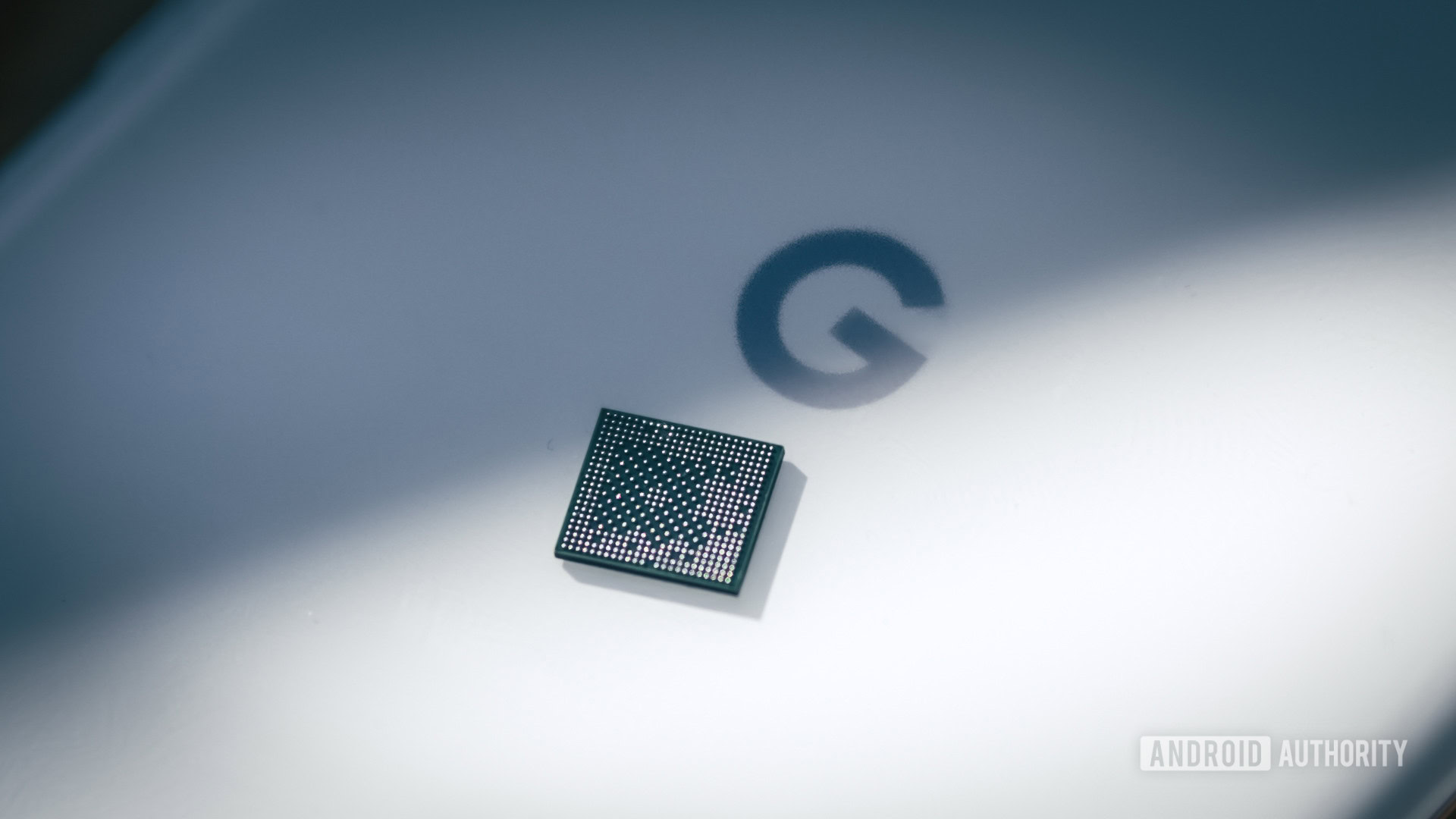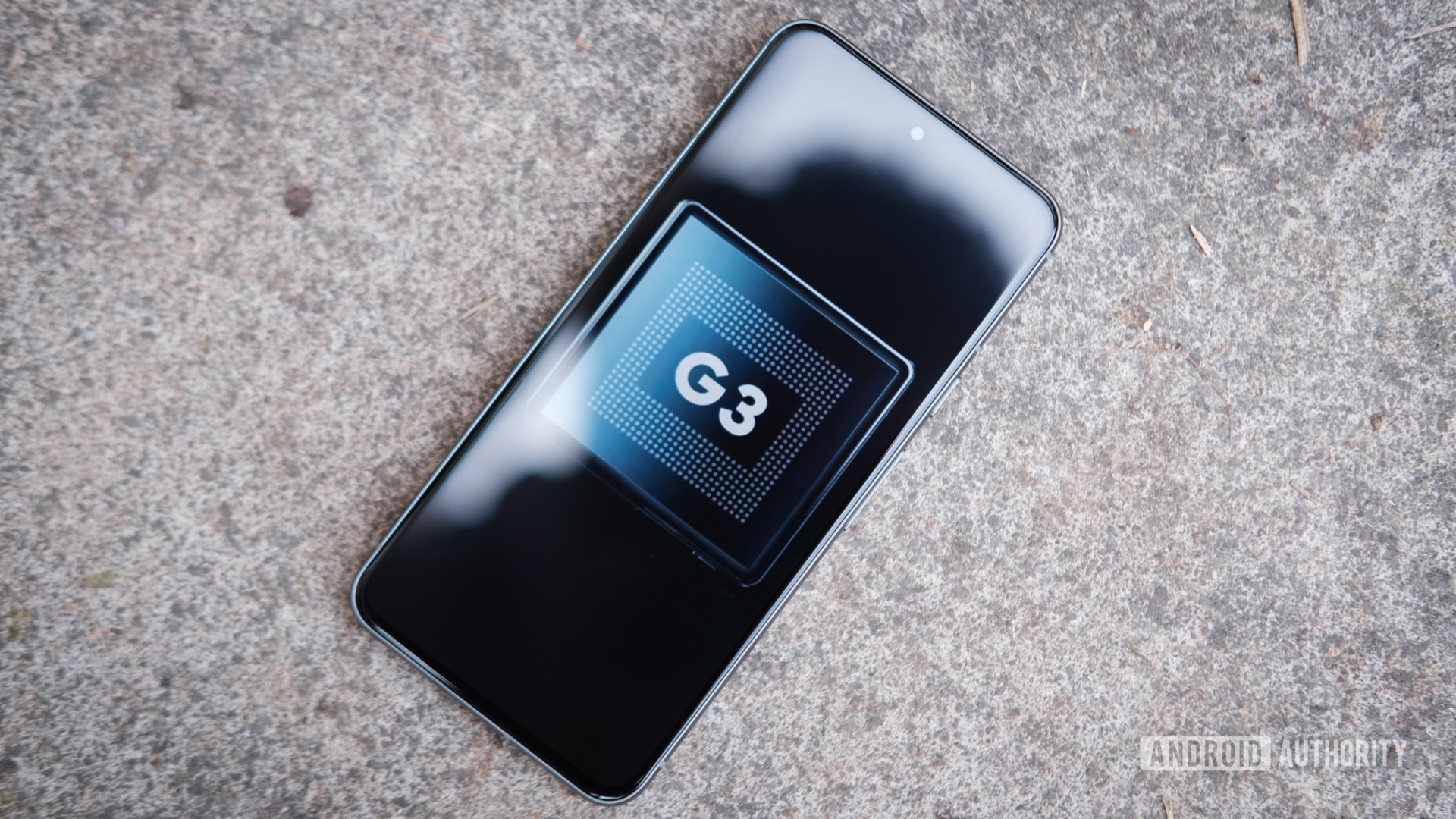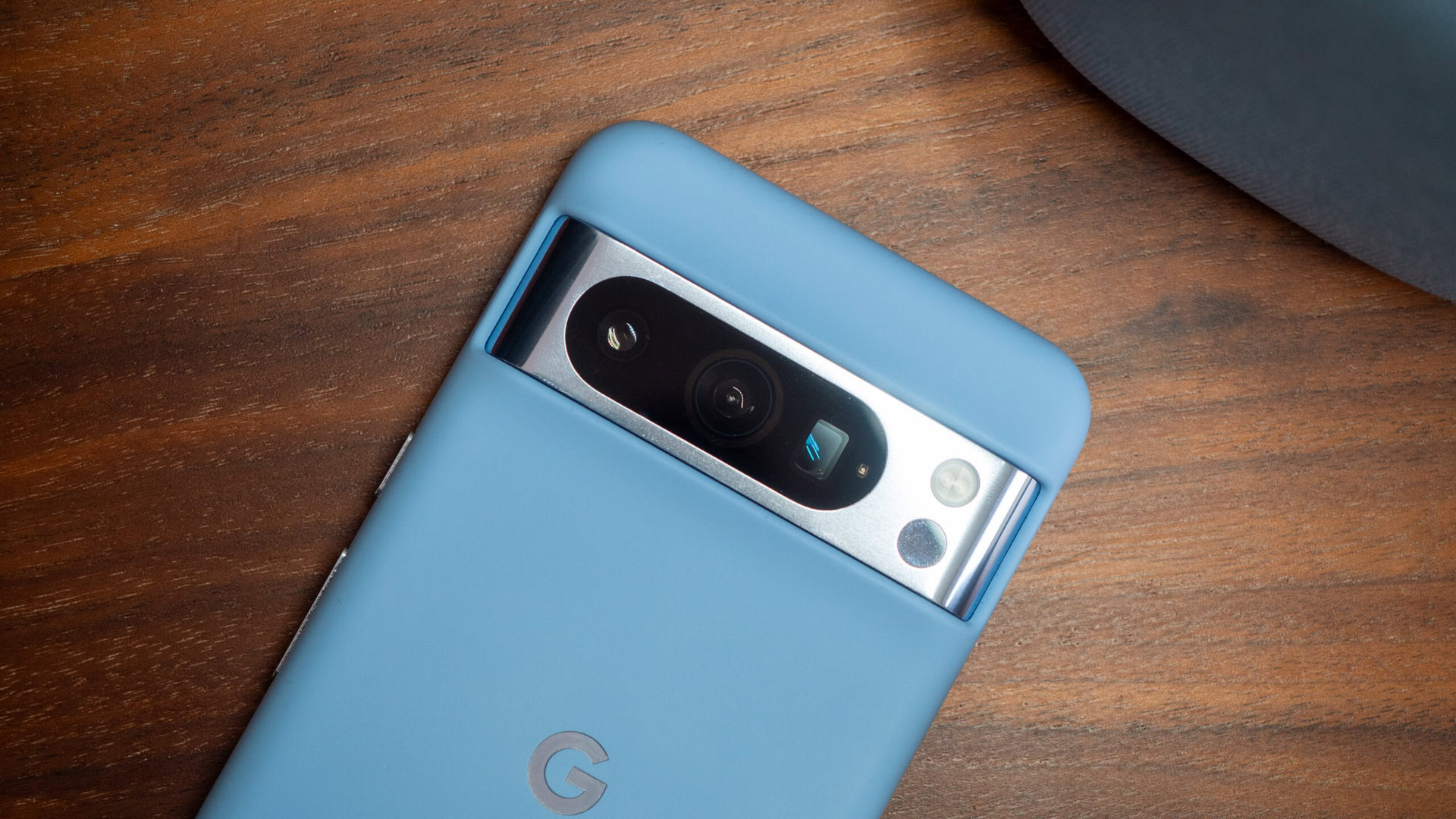Affiliate links on Android Authority may earn us a commission. Learn more.
Google Tensor G3: Everything you need to know about the Pixel 8 processor
The Google Pixel 8 series, including the new Pixel 8a, is powered by the company’s latest semi-custom processor, the Tensor G3. As the name suggests, this is Google’s third-generation smartphone chip, and, as you would expect, the new model provides notable upgrades on the previous generation Tensor G2.
However, the company didn’t spend much time discussing the Tensor G3 during the Pixel launch. So, let’s get into what’s new with the processor and see how it performs compared to the competition.
Google Tensor G3 processor specifications
| Google Tensor G3 | Google Tensor G2 | Google Tensor | |
|---|---|---|---|
CPU | Google Tensor G3 1x Arm Cortex-X3 (2.91GHz) 4x Arm Cortex-A715 (2.37GHz) 4x Arm Cortex-A510 (1.70GHz) | Google Tensor G2 2x Arm Cortex-X1 (2.85GHz) 2x Arm Cortex-A78 (2.35GHz) 4x Arm Cortex-A55 (1.80GHz) | Google Tensor 2x Arm Cortex-X1 (2.80GHz) 2x Arm Cortex-A76 (2.25GHz) 4x Arm Cortex-A55 (1.80GHz) |
GPU | Google Tensor G3 Arm Mali-G715 (MP7 estimated) | Google Tensor G2 Arm Mali-G710 MP7 | Google Tensor Arm Mali-G78 MP20 |
Caches | Google Tensor G3 Unknown | Google Tensor G2 4MB CPU L3 8MB system level | Google Tensor 4MB CPU L3 8MB system level |
Machine Learning | Google Tensor G3 Third-gen Tensor Processing Unit | Google Tensor G2 Next-gen Tensor Processing Unit | Google Tensor Tensor Processing Unit |
Media Decode | Google Tensor G3 H.264, H.265, VP9, AV1 | Google Tensor G2 H.264, H.265, VP9, AV1 | Google Tensor H.264, H.265, VP9, AV1 |
Modem | Google Tensor G3 4G LTE 5G sub-6Ghz and mmWave | Google Tensor G2 4G LTE 5G sub-6Ghz and mmWave | Google Tensor 4G LTE 5G sub-6Ghz and mmWave |
Process | Google Tensor G3 Samsung 4nm (expected) | Google Tensor G2 Samsung 5nm | Google Tensor Samsung 5nm |
Tensor G3 CPU explained
The Pixel 8’s Tensor G3 sports a single powerhouse Arm Cortex-X3 CPU core clocked at 2.91GHz, four Cortex-A715 cores at 2.37GHz, and four little Cortex-A510 cores at 1.7GHz. Those are much newer than the 2020-era CPU cores used in the original Tensor and G2. These changes also complete Google’s move over to 64-bit-only cores. However, Google isn’t using the latest Cortex-X4, A720, and A520 parts that you’ll find in rival high-end chipsets like the Snapdragon 8 Gen 3.
Note that the clock speed of the Cortex-X3 is virtually unchanged from the older Cortex-X1, despite Google moving to a more advanced manufacturing node. For reference, Qualcomm clocks the X3 at 3.19GHz in the 8 Gen 2. As we’ll see in the benchmarking section, Google has positioned the X3 much further towards the energy efficiency end of the performance/power curve rather than realizing the core’s full performance potential.
Tensor G3 optimizes its CPU clocks for power efficiency over peak performance.
The end result is peak single-core performance that’s a little better than last year but notably more power efficient for the same workloads. You probably noticed that the Tensor G3 is a nine-core CPU, up from eight in previous generations, which improves the processor’s multi-core capabilities. This is the CPU setup’s most significant area of improvement.
According to Arm, the A715 can be built as capable as the old X1 for a similar clock and cache setup. We don’t have cache details, but the clock speeds suggest Google hasn’t quite targeted this performance point, so the controversial two-big core approach is undoubtedly gone. However, four A715s are certainly more potent than the previous setup, while the lower-clocked A510s should further boost battery efficiency.
Overall, it appears that Google has taken a slightly different approach with its third bite at SoC design. We’re looking at a chip far more focused on power efficiency. Google could be compensating for Samsung’s less-than-ideal manufacturing process, though we suspect many of those issues have been remedied on newer nodes. Instead, I expect that Google is far less reliant on big CPU cores to assist with machine learning workloads than before. Tensor G3’s new TPU is much more powerful, and the latest CPU and GPU cores are also more capable. Speaking of graphics…
Tensor G3 GPU explained

Tensor G3 sports newer graphics capabilities in the form of an Arm Mali-G715 GPU. Google hasn’t disclosed the core count, but based on our performance numbers, we believe seven GPU cores are inside, matching previous layouts.
Note the use of the Mali-G715 rather than Immortalis branding here (Immortalis is for 10 G715 cores or greater). That means there’s no hardware ray-tracing support in the Tensor G3 (ray-tracing benchmarks wouldn’t run either), once again setting the Pixel 8 up as a disappointment for serious mobile gamers. While still a niche feature, we would have liked a more future-proof graphics setup for a phone with seven years of software support.
Still, Arm touts a 15% ISO-process performance gain, 2x machine learning improvement, and 15% better energy efficiency over the previous-gen Mali-G710. Gamers can certainly look forward to better performance than last year, but the Pixel 8 and 8 Pro are still mid-range and won’t catch the best Android gaming phones.
What else is new in the Tensor G3?

Unfortunately, Google keeps its machine learning TPU sauce a closely guarded secret, but it did reveal a little bit about its new capabilities. Google is also now running “Foundation Models” of its cloud AI capabilities directly on Tensor G3. In other words, they’re shrunk-down, lower-accuracy versions of Google’s high-end generative models, but they no longer rely on a network connection.
Features like Best Take, an updated Magic Eraser, and improved Google Assistant text-to-speech all leverage the chip’s unspecified but improved TPU capabilities. Although Google still relies on the power of cloud computing for features like the Pixel 8 Pro’s Video Boost mode. However, not all of the Pro’s AI features run on the Pixel 8, either due to cloud computing costs or unspecified hardware restrictions.
Speaking of multimedia support, the Tensor G3 is the first mobile processor to support AV1 encoding for more efficient video formats. However, the Pixel 8 default camera app only renders videos in H264 or HEVC, at least for now.
The Tensor G3 is also Wi-Fi 7-ready for faster home networking with compatible routers. The phone features an updated G5300i modem (a version of the Samsung Exynos 5300), similar to the Pixel 7 series. So, there are the same 5G capabilities as before.
Pixel 8 and Tensor G3 benchmarks
Those looking for blazing performance from the Pixel 8 series will be disappointed, but more so in the regular Pixel 8 than the 8 Pro. At least as far as the CPU is concerned. GeekBench 6 shows a 10.7% uplift for the Pixel 8 and a more hefty 23.0% gain for the Pro over the Tensor G2. However, both phones come behind the Snapdragon 8 Gen 2 and Apple’s mighty A17 Pro. It’s also worth highlighting the performance gulf between the Tensor G3 and the Snapdragon 8 Gen 3. Our benchmark results of the latter, running in a reference device, are considerably rosier than Google’s chipset, as are the results from Snapdragon 8 Gen 3 handsets like the Galaxy S24 series.
Multi-core scores see a more consistent 18.7% to 23.7% generational jump due to the higher core count and more powerful middle cores. Again, though, even these improved results leave Tensor G3 languishing behind the best in the business. PCMark’s Work 3.0 test also places the chip near the bottom of the pecking order, owing to the more conservative CPU and choice of UFS 3.1 memory.
There is some good news to all this: the Pixel 8 series performs much better in our battery life tests, gaining several hours of additional use in our web and video playback tests. The more efficient nature of the Tensor G3 is a boon for all-day battery life and anecdotally runs cooler for everyday tasks, too.
Graphics see a much more consistent and significant gain; we recorded a 32.6% uplift in 3DMark WildLife with the move to Mali-G715 from the G710 GPU. That’s hugely significant, making the Pixel 8 series more potent gaming phones. Still, Google is starting from a lower base, and the G3 remains behind the best in the business by a significant margin. At least where peak performance is concerned. With the Snapdragon 8 Gen 3 touting major graphics gains, the Pixel 8 Pro is far behind gaming rivals now that we’re in 2024.
Unfortunately, the phones struggle with our stress test for longer play sessions. Throttling hits the Pixel 8 particularly hard after just a few runs, and falls faster than the previous generation. The Pixel 8 Pro survives a little longer and doesn’t throttle back as quickly, likely owing to more space for cooling, but it’s certainly no better than last year’s model. In fact, internal temperatures spike close to 44°C for the Pixel 8 and 43°C for the 8 Pro. That’s a little hotter than most competitors and the 7 Pro, which reached just below 41°C.
A word on the Pixel 8a’s Tensor G3 benchmarks
Google’s A-series smartphones have historically trailed behind their flagship counterparts in terms of performance. This was true even for the last-gen Pixel 7a, which shared the same Tensor G2 chip as the mainline Pixel 7 series. The difference in performance was chalked down to a different manufacturing process but heat dissipation (or lack thereof) may have played an equal role.
So when Google announced the Pixel 8a in May 2024, we ran its Tensor G3 chip through our gauntlet of benchmarks and compared it to the Pixel 8 and 8 Pro. And to our pleasant surprise, the mid-range phone managed to keep pace with the more expensive Pixel 8 in both CPU and GPU loads. In Geekbench 6, for example, the Pixel 8a delivers the exact same single-core score but falls 5% short of the Pixel 8 in the multi-core test. Needless to say, this is still an excellent showing for a $500 device and makes the Pixel 8a one of the most powerful phones in its class, especially in Western markets.
Tensor G3 closing thoughts

The benchmark results are a little disappointing, given our expectations of a significant revamp and some discrepancies between the two models. Rumors about different Tensor G3 packaging for the Pixel 8 and 8 Pro could be well-founded, with cheaper manufacturing limiting the smaller models’ peak performance. This will require further investigation, as internal layout and cooling also undoubtedly play a part. There are also questions about the chipset’s performance in the Pixel 8a, which we’ll be sure to answer in due course.
Even so, these tests go above and beyond what the Pixel 8 requires to provide robust day-to-day performance. The CPU setup is powerful enough for multitaskers and indicates gains in battery life, which is arguably more important. Likewise, while not industry-leading, the GPU setup can still play all of today’s best mobile games.
That said, we are concerned about how well the Tensor G3 will last over the long term. A conservative performance point, poor sustainable performance, and missing features like ray tracing will quickly see the G3 slide into the mid-range. It could fall towards the lower end of the performance spectrum by the time the Pixel 8 series is just halfway through its lifecycle.
Tensor G3 is a mixed bag, but it allows Google to add some unique features to the otherwise excellent Pixel 8 series.

Fun, exclusive Android 14 customizations
Industry-leading update promise
